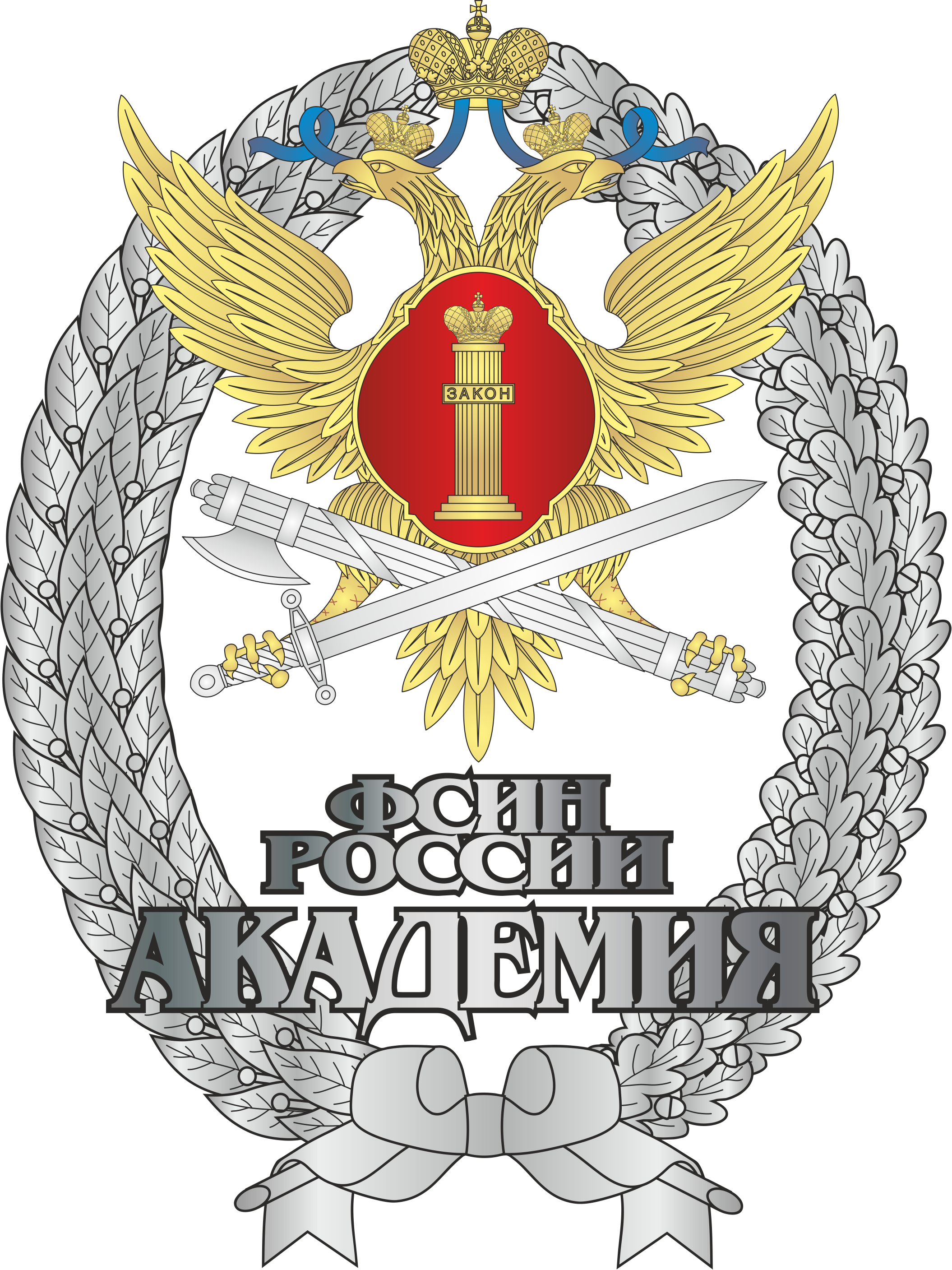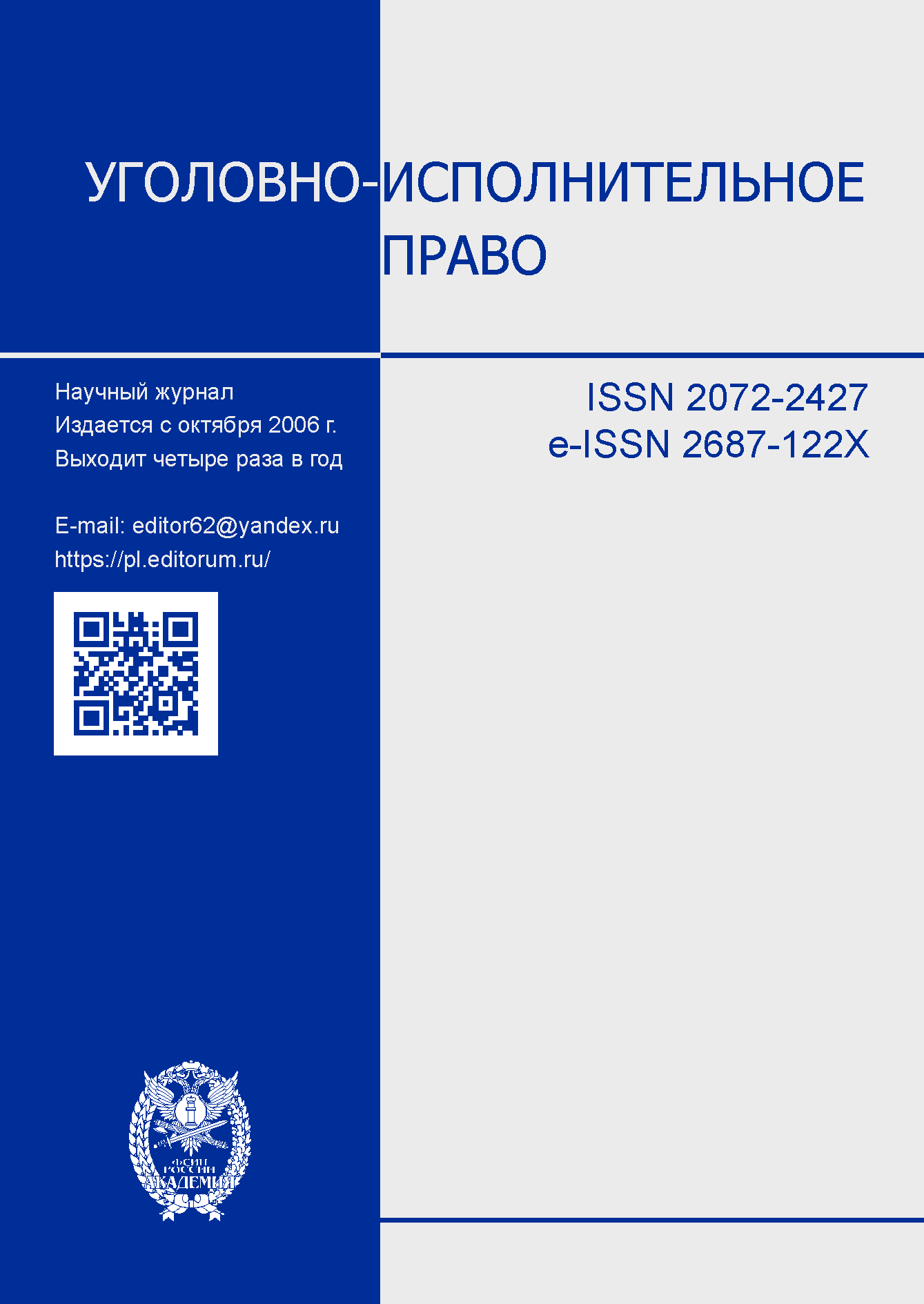Ryazan', Orel, Russian Federation
Ryazan', Russian Federation
Russian Federation
UDC 331.105.6
Based on the study of penal enforcement and other legislation, scientific literature, as well as the practice of execution of punishments in Russia and abroad, the article formulates a number of directions for the development of public-private partnership in the penitentiary sphere. Particular emphasis is placed on the «denationalization» of the organization of the execution of punishments, including taking into account its economic efficiency, the expediency of achieving the correction of convicts mainly through their involvement in labor and social impact, resuscitation of exile as a type of punishment. It is proposed to develop a concept of interaction of the penal enforcement system with the business community, public and other non-governmental organizations.
public-private partnership, correction of convicts, involvement of convicts in labor, public impact, link
1. Adoevskaya O. A. Konvencionnye normy o resocializacii osuzhdennyh // Yuridicheskiy vestnik Samarskogo universiteta. 2019. T. 5. № 1. S. 52-58.
2. Sedyh V. A., Avdeev V. V., Rodionov A. V., Skiba A. P. Nekotorye voprosy pravovogo regulirovaniya trudoustroystva osuzhdennyh k prinuditel'nym rabotam v ramkah gosudarstvenno-chastnogo partnerstva v proizvodstvennom sektore ugolovno-ispolni- tel'noy sistemy Rossiyskoy Federacii // Vedomosti ugolovno-ispolnitel'noy sistemy. 2020. № 10(221). S. 53-61.
3. Skiba A. P., Maloletkina N. S. Gosudarstvenno-chastnoe partnerstvo v penitenciarnoy sfere kak sposob realizacii obschestvennogo vozdeystviya v otnoshenii osuzhdennyh: nekotorye teoreticheskie voprosy // Uchenye zapiski yuridicheskogo fakul'teta. 2022. № 2. S. 16-18.
4. Rodionov A. V., Pichugin O. A. Organizacionno-pravovye problemy privlecheniya k kollektivnoy material'noy otvetstvennosti osuzhdennyh, otbyvayuschih nakazanie v vide lisheniya svobody, za uscherb, prichinennyy imi pri ispolnenii trudovyh obyazannostey // Chelovek: prestuplenie i nakazanie. 2020. T. 28(1-4), № 1. S. 72-78.
5. Teplyashin P. V. Anglo-irlandskiy tip evropeyskih penitenciarnyh sistem: organizacionno-pravovye osnovy, sredstva obrascheniya i usloviya soderzhaniya osuzhden-nyh // Zhurnal zarubezhnogo zakonodatel'stva i sravnitel'nogo pravovedeniya. 2017. № 1(62). S. 122-131.
6. Shnarbaev B. K. Ispol'zovanie nestandartnyh situaciy dlya obespecheniya osuzhdennyh trudom // Ugolovno-ispolnitel'noe pravo. 2022. T. 17(1-4), № 3. S. 343-349.
7. Skiba A. P., Kraynova N. A. Mezhdunarodnaya nauchno-prakticheskaya konferenciya «Gosudarstvenno-chastnoe partnerstvo v penitenciarnoy sfere kak forma vzaimodeystviya gosudarstva, institutov grazhdanskogo obschestva i biznesa» (17 marta 2022 g.) // Ugolovno-ispolnitel'noe pravo. 2022. T. 17(1-4), № 1. S. 91-97.
8. Tohochynskyi, O. M., Anishchenko, V. O. & Puzyrov, M. S. 2018, ‘Economic and legal nature of public-private partnership in the penitentiary system’, Scientific Bulletin of Polissia, iss. 3(15), pp. 38-42.
9. Fine, J. 1978, ‘An exploratory study to measure the postrelease effectiveness of work- training release programs’, Offender Rehabilitation, iss. 2, rp. 215-224.
10. Witte, A. D. 1977, ‘Work release in North Carolina. A program that works!’, Law and Contemporary Problems, iss. 41, rp. 230-251.
11. Schoen, K. F. 1987, ‘Hard Labor Can Save Prison Time’, Prison journal, vol. 67, iss. 2, pr. 67-70.
12. Witte, A. D. & Reid, P. A. 1980, ‘An exploration of the determinants of labor market performance for prison releases’, Journal of Urban Economics, vol. 8, iss. 3, rp. 313-329.
13. Schaller, J. 1982, ‘Work and Imprisonment: An Overview of the Changing Role of Prison Labor in American Prisons’, Prison journal, vol. 62, iss. 2, rp. 3-12.
14. Miller, E. E. 1982, ‘Prison Industries in the People’s Republic of China’, Prison Journal, vol. 62, iss. 2, rp. 52-57.
15. Auerbach, B. 1982, ‘New Prison Industries Legislation: The Private Sector Re-enters the Field’, Prison journal, vol. 62, iss. 2, rp. 25-36.
16. Funke, G. S., Wayson, B. L. & Miller, N. 1982, ‘The Future of Correctional Industries’, Prison journal, vol. 62, iss. 2, rp. 37-51.
17. Shaw, V. N. 1998, ‘Productive Labor and Thought Reform in Chinese Corrections: A Historical and Comparative Analysis’, Prison journal, vol. 78, iss. 2, rp. 186-211.
18. Hooks, G., Mosher, C., Rotolo, T. & Lobao, L. 2004, ‘The Prison Industry: Carceral Expansion and Employment in U.S. Counties, 1969-1994’, Social Science Quarterly, vol. 85, iss. 1, rp. 37-57.
19. Ashenfelter, O. C. 2014, ‘The early history of program evaluation and the department of labor’, Industrial and Labor Relations Review, iss. 67, rp. 574-577.
20. Durham, A. M. 1989, ‘Managing the costs of modern corrections: Implications of nineteenth-century privatized prison-labor programs’, Journal of Criminal Justice, vol. 17, iss. 6, pr. 441-455.
21. Gentera, S., Hooks, G. & Mosher, C. 2013, ‘Prisons, jobs and privatization: The impact of prisons on employment growth in rural US counties, 1997-2004’, Social Science Research, vol. 42, iss. 3, rp. 596-610.
22. Friedlander, D., Greenberg, D. H. & Robins, P. K. 1997, ‘Evaluating government training programs for the economically disadvantaged‘, Journal of Economic Literature, iss. 35, rp. 1809-1855.
23. Sliva, S. M. & Samimi, C. 2018, ‘Social Work and Prison Labor: A Restorative Model’, Social Work, vol. 63, iss. 2, rp. 153-160.
24. Davis, A. & Shaylor, C. 2020, ‘Race, Gender, and the Prison Industrial Complex’, Meridians Feminism Race Transnationalism, vol. 19, iss. 1, rp. 87-111.
25. Silva, C. & Saraiva L. 2016, ‘Alienation, segregation and resocialization: meanings of prison labor’, Revista de Administração, vol. 51, iss. 4, rp. 366-376.
26. Burke, L., Millings, M., Taylor, S. & Ragonese E. 2020, ‘Transforming rehabilitation, emotional labour and contract delivery: A case study of a voluntary sector provider in an English resettlement prison’, International Journal of Law, Crime and Justice, vol. 61.
27. Prescott, J. J. & Pyle, B. 2019, ‘Identifying the impact of labor market opportunities on criminal behavior’, International Review of Law and Economics, iss. 59, pr. 65-81.
28. Yang, C. S. 2017, ‘Local labor markets and criminal recidivism’, Journal of Public Economics, iss. 147, rp. 16-29.
29. Burkhardt, B. C. 2017, ‘Who is in private prisons? Demographic profiles of prisoners and workers in American private prisons’, International Journal of Law, Crime and Justice, iss. 51, rp. 24-33.
30. Rattner, A., Turjeman, H. & Fishman, G. 2008, ‘Public versus private defense: Can money buy justice?’, Journal of Criminal Justice, vol. 36, iss. 1, rp. 43-49.
31. Duwe, G. 2015, ‘An outcome evaluation of a prison work release program: Estimating its effects on recidivism, employment, and cost avoidance’, Criminal Justice Policy Review, iss. 26, rp. 531-554.
32. Khatleli, N. 2016, The Utility of the «Step-In» Clause in the South African Prison Public Private Partnerships. Proceedings of the DII-2016 Conference on Infrastructure Development and Livingstone, Zambia Investment Strategies for Africa: Achieving Solutions for Renewable Energy and Sustainable Development (Livingstone, Zambia), rp. 400-406.
33. Hu, Y. & Liu, L. 2020, ‘Becoming industrious female citizens: Work, discipline, and negotiation in Chinese female prison’, International Journal of Law, Crime and Justice, iss. 61.
34. Devine-Wright, H., Baybutt, M. & Meek, R. 2019, ‘Producing food in English and Welsh prisons’, Appetite, vol. 143, iss. 1.
35. Edwards, R. C. 2017, ‘Convicts and conservation: inmate labor, fires and forestry in southernmost Argentina’, Journal of Historical Geography, iss. 56, rp. 1-13.
36. Skiba A. P. «Razgosudarstvlenie» ispolneniya lisheniya svobody dlya sovershenstvovaniya deyatel'nosti ugolovno-ispolnitel'noy sistemy // Yuridicheskiy vestnik Rostovskogo gosudarstvennogo ekonomicheskogo universiteta. 2008. № 1(45). S. 55-62.
37. Petrov S. M., Tumanov G. A. O dvuh strategiyah reformirovaniya ugolovno-ispolnitel'noy sistemy // Gosudarstvo i pravo. 1995. № 7. S. 102-109.
38. Skiba A. P., Rodionov A. V. O reanimacii ssylki kak ugolovnogo nakazaniya: pravovye i ekonomicheskie aspekty // Ugolovno-ispolnitel'noe pravo. 2016. № 4. S. 17-21.
39. Butenko T. P., Petaychuk A. A. Obschestvennoe vozdeystvie kak sredstvo ispravle- niya osuzhdennyh k lisheniyu svobody v usloviyah pandemii // Vestnik Amurskogo gosu- darstvennogo universiteta. Ser. Gumanitarnye nauki. 2021. № 92. S. 25-28.
40. Maloletkina N. S. Pravovye osnovy obschestvennogo vozdeystviya kak sredstva ispravleniya osuzhdennyh v Rossii i ryade stran // Ugolovno-ispolnitel'noe pravo. 2019. T. 14(1-4), № 4. S. 362-366.
41. Skiba A. P., Nikitin D. A. Kruglyy stol «Obschestvennoe vozdeystvie kak sred- stvo ispravleniya osuzhdennyh» (2 dekabrya 2020 g.) // Ugolovno-ispolnitel'noe pravo. 2020. T. 15(1-4), № 4. S. 438-442.
42. Vorob'ev S. M. Konstitucionno-pravovye osnovy deyatel'nosti religioznyh organizaciy v ugolovno-ispolnitel'noy sisteme Rossii // Ugolovno-ispolnitel'noe pravo. 2016. № 1(23). S. 32-35.
43. Skomoroh O. A. Uchastie svyaschennosluzhiteley v ispravlenii osuzhdennyh pri reshenii sudami voprosov v stadii ispolneniya prigovora // V Mezhdunarodnyy penitenciarnyy forum «Prestuplenie, nakazanie, ispravlenie» (priurochennyy k provedeniyu v 2021 g. v Rossiyskoy Federacii Goda nauki i tehnologiy) : sb. tez. vystup. i dokl. uchastnikov (Ryazan', 17-19 noyab. 2021 g.) : v 9 t. Ryazan' : Akademiya FSIN Rossii, 2021. T. 3. S. 325-329.
44. Tolchenkin D. A. Evolyuciya instituta tyuremnyh kapellanov v Rossii i za rube- zhom // Ugolovno-ispolnitel'noe pravo. 2016. № 1(23). S. 41-44.
45. Korennaya A. A. K voprosu o sovershenstvovanii ispolneniya nakazaniya v vide lisheniya svobody dlya lic, sovershivshih ekonomicheskie prestupleniya, ili «chast- nye tyur'my» dlya biznesmenov // Vestnik Kuzbasskogo instituta. 2018. № 4(37). S. 64-74.












